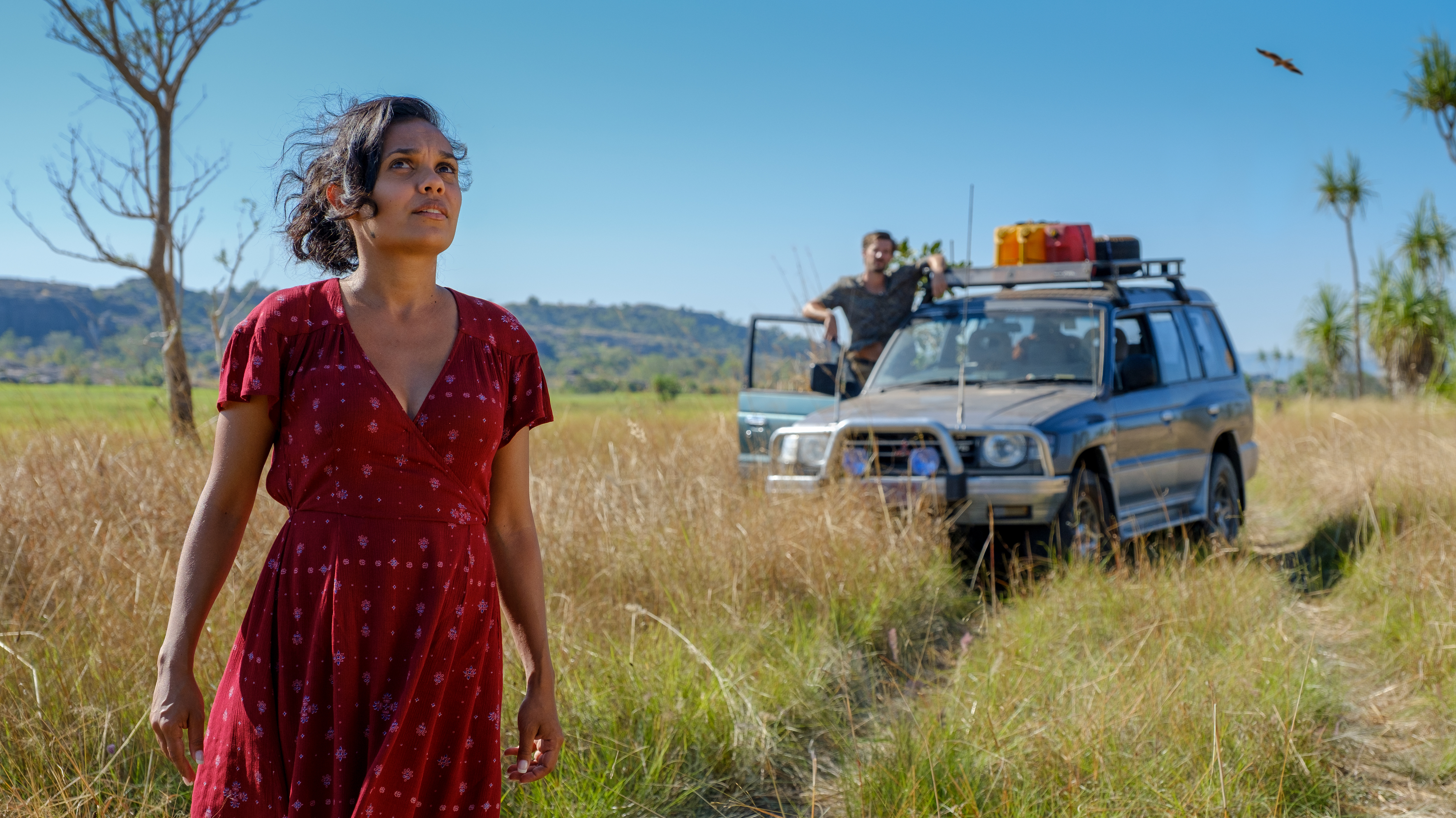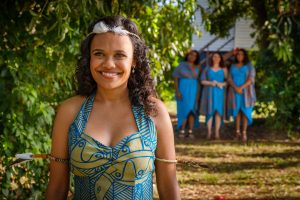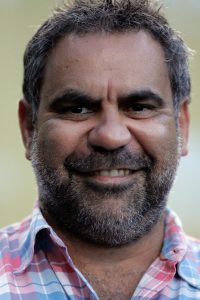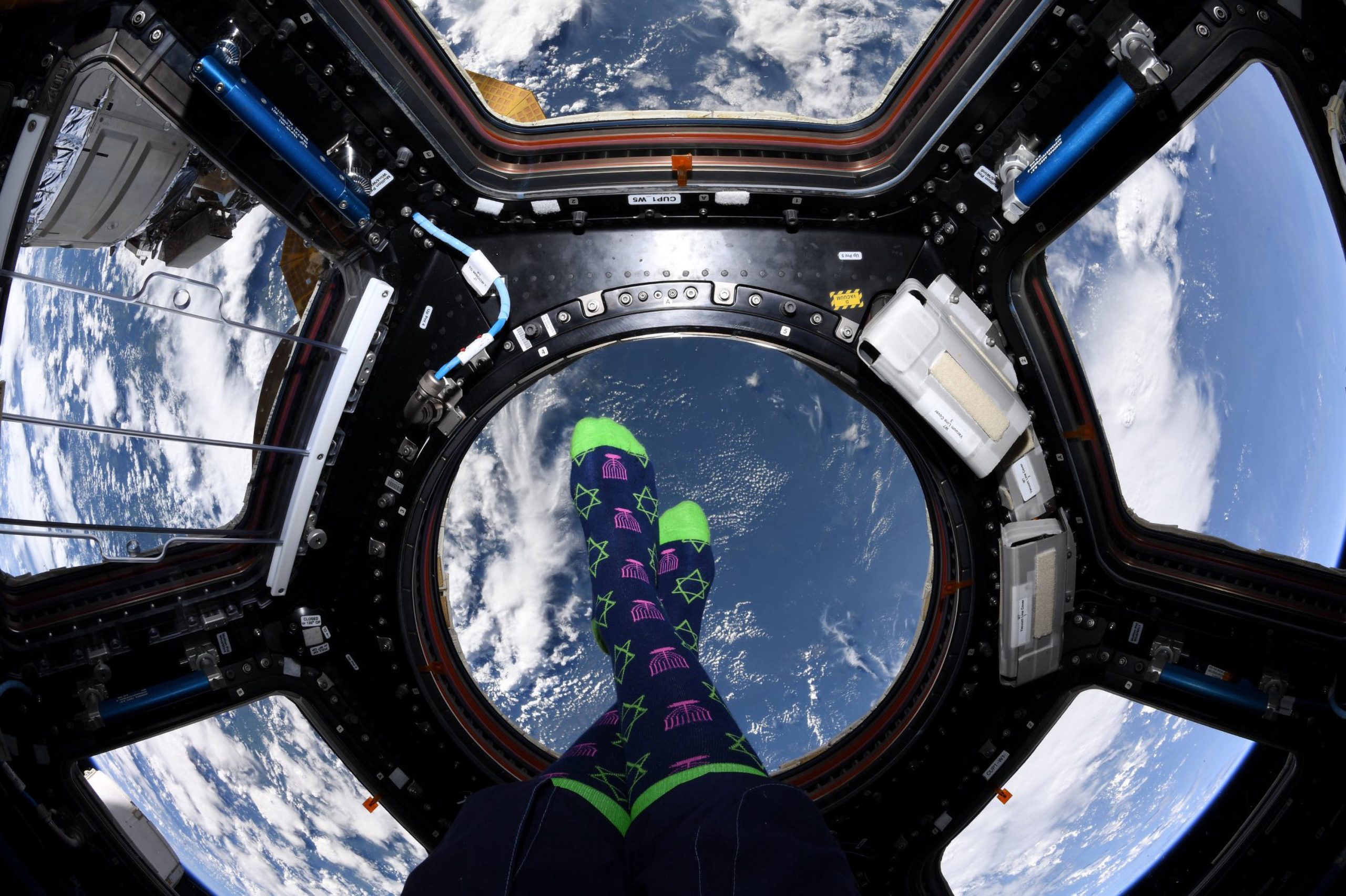
The cast and crew took some time to speak with Solzy at the Movies about Top End Wedding during the 2019 Sundance Film Festival.
Director Wayne Blair, actress/co-writer Miranda Tapsell, actor Gwilym Lee, and co-writer Joshua Tyler were among those that I spoke with during the interview. The interview took place on the Tuesday prior to the world premiere at the Eccles Theater. It also took place less than a week after a story was published in The Atlantic involving the director of Lee’s previous film, Bohemian Rhapsody. While this weighed heavily on my mind, I opted against addressing the elephant in the room so as to not take away from the world premiere. If you’re wondering why there are no questions pertaining to that particular subject, this is why.

I found Top End Wedding to be really fun and entertaining romantic comedy. What was the inspiration for the screenplay?
Miranda Tapsell: It all came about when Josh and I were teaching some acting students together. We were both mentors for the program. Josh had told me that he’d been up to my hometown in the Northern Territory. He’d also started telling me about all the films he loved and we noticed Oh wow! We like a lot of the same films. Then we noticed a great number of them were romantic comedies. Josh had said that we should set we should set a romantic comedy up in the territory. At first, I was really sort of intimidated by the idea of writing something as ambitious as this but I think I learned so much from Josh.
Were there any romantic comedies that served as an influence?
Joshua Tyler: The Apartment was one that we talked about a lot. We talked about Four Weddings and a Funeral. We talked about Notting Hill.
Miranda Tapsell: My Big Fat Greek Wedding.
Joshua Tyler: Even other films that I guess are not rom-coms but Thelma and Louise and The Hangover as well.
Miranda Tapsell: We drew from lots of lots of references. Yep.
This film reunited much of the team behind The Sapphires. How did it feel to get back together after so many years?
Miranda Tapsell: It was excellent.
Wayne Blair: It was great. The producers were the same. Miranda and myself had worked together so you know that’s intact yet you’re making a new story. We sort of went in with an instant professionalism but also okay, this is a new story that we have to tell together and let’s get on board with that so that was really fantastic.
Miranda, you’ve worked with Wayne on a few movies and TV shows. In what ways has he evolved as a director?
Miranda Tapsell: I think Wayne has really grown so much especially because he’s done a lot of things in LA as well. I think what made it different was that it was mainly Gwilym and I who were his focus. There were so many other elements to The Sapphires. There were four girls. It was just different. I think it was really nice to be able to develop a short-hand this time around.

Gwilym, what did you love about the screenplay and what did what attracted you to this character?
Gwilym Lee: I had an immediate connection with it. I enjoyed it as a romantic comedy in its own right. It was unique to me in that it was told through the lens of Aboriginal experience and through this idea of people trying to reconnect with their roots and their heritage or maybe connect with them for the first time. That’s something that rings true to me and connects with me. It was quite an immediate love affair with the script because it was very quaint. As soon as you start looking at the locations that we were going to be filming in, it was a no-brainer really because once I started looking up these places online like the Northern Territory, Katherine, and Kakadu—all these places, it’s pretty much heaven on earth so the opportunity to go out there and visit these places as well was just a real thrill.
Is there anything in particular that you look for in a script?
Gwilym Lee: New challenges. You don’t want to kind of play the same kind of characters. I haven’t done a huge amount of comedy before so I suppose playing a comic character really appealed to me. This is a real kind of life experience job as well—getting to travel as part of your work is real privilege as well. That was something that appealed. Working with these guys and the opportunity to work with Wayne as well. I like working with directors who understand an actor’s process and Wayne is an actor as well so I felt I feel fully supported in his presence and I trusted him and he trusted me. I always want to collaborate with people that are going to bring out the best in me as an actor. I think Wayne was someone that I kind of felt very secure in his presence so that was another reason to do it as well.
Did you have any favorite sites in Australia while you were there?
Gwilym Lee: So many! We were very, very lucky in that we got given access to parts of the country that no one gets see because some of the traditional owners of these lands were kind and allowed us onto the country, which was pretty amazing. Parts of Kakadu—you’ll see it in the film—these beautiful landscapes. For those that haven’t seen the film, the closest to describe it is like Pride Rock in The Lion King when he stands on top of the rock and shows Simda the world and you see the horizon of the world. That’s what it’s like. It’s just awesome.
What was the most challenging aspect of the film in general aside from wedding planning?
Miranda Tapsell: (Laughs) It was overall an incredibly enjoyable experience while we were filming out in the middle of the wilderness and there were long treks. There were lots of heavy cameras. There were lots of logistical things to think about. I think that’s what really kind of propelled the story in a way. Everyone behind the camera believed in the story. I think it was nice to be a part of a film that wanted to show a different part of Australia and have it be something that everyone can sit down and enjoy.

Wayne Blair: The challenges for me—I suppose—were the schedule. It was an independent film. We had to get to so many places and in the six-week time period. The weather because in the top end of the country, one of the biggest challenges is the six months of the year where it just pours rain. That’s what they call that the wet season.
Miranda Tapsell: That’s right.
Wayne Blair: Because of Gwilym’s timing, for Miranda’s timing, and for my timing, we just had to sort of make it right. I think we started shooting in April. Fortunately for us—because we could have got cyclonic periods for the first week of that shoot. We didn’t. That was fantastic. It was something that I thought about late at night but when you sort of did the weather, it was it turned out great for us. We didn’t get anything like that. It was really sweet.
Joshua Tyler: Lots of sweaty crew members!
Gwilym Lee: Just dealing with the elements. Traveling as much as we did in such a brief period time and exposed to some like the dust, the sweat, the humidity, the crocodiles, and the snakes. It’s an adventure!
I imagine it’s quite a different experience from having to recreate Live Aid.
Gwilym Lee: Yeah, just a bit, just a bit, and certainly different cold, dark London winters, which is one of the great reasons for doing it.
How important was it to have been to have the Indigenous representation both on screen and in the film crew?
Miranda Tapsell: I think the toughest thing for me as an indigenous storyteller is that there is the pressure to get things right. There is the pressure to make sure that what you’re saying punches up. I guess the reason why that happens—the reason why there is that anxiety is because people get all their information about a certain community from a film. They’ll watch a film prominently made by Aboriginal people and they go, Oh, that informs them of the Indigenous experience. If there’s more of that, they’ll see just how multifaceted it is. They’ll see how—for instance—the Aboriginal people that live in the desert are very different to the people the Aboriginal people that live on the Tiwi Islands. There isn’t just one Indigenous experience.
Wayne Blair: For me—the crew. When I sort of started filmmaking, a mentor for me was Uncle Lester Bostock. He’s passed away now but he was said to me, “Wayne, it would be great if one day when all our crew is Indigenous.” It’s a sort of ethos of mine that when I do partake in a story—especially in my own country—to bring people with me and to get attachments in our country, a designer might be Indigenous but an Indigenous young up-and-coming person, male or female, will work in that department. That’s very important for us—to bring people with us as we journey on and try to tell stories for the world.
I imagine that you’re busy with Top End Wedding but have you had the chance to check out the Merata Mita documentary yet?
Joshua Tyler: I saw it. It was really moving and just so inspiring. I just couldn’t believe how much she achieved in her lifetime and to do with five kids—just unbelievable.
Wayne Blair: I’ve done workshops with her in Australia, which we’ve been one on one in workshops with other filmmakers. She was so beautiful and warm and said what you have inside you, Wayne, as a storyteller is what we want. You shouldn’t change that and sometimes people change you or try to make you something else but Merata was absolutely beautiful so if we get a chance we should absolutely see documentary.
As I was watching Top End Wedding, I was thinking about how this film and the documentary kind of go hand-in-hand.
Wayne Blair: In what sense? That would be great to hear from your angle.
I mean just in terms of the representation.
Wayne Blair: Yeah, right. Is that because—I haven’t seen the doc—she talks about representation? I’m assuming she does.
Joshua Tyler: Sundance as well is a big part of the doc because she was a mentor here and her films premiered here and it just made me—the same thing, I was like, Wow, we’re a part of her story in a weird way.
Wayne Blair: That’s awesome.
Joshua Tyler: It’s really an honor in a beautiful way.
Wayne Blair: Something has come out and about that Miranda and I’ve touched on this as well. The weight of the Native American storytellers and what they do here and how they’ve been supported and developed in this festival, which is great. Our Australian films and our Indigenous films that have come here in the past five to ten years—especially in the last couple of years. But with also Top End Wedding being here is really beautiful. It’s not in sort of the romantic comedy side of things so it’s another arm that we’re doing but that’s great.
Joshua Tyler: Yeah, we’re sort of part of history. I didn’t quite realize until I was at the festival that we’re part of a history of this festival supporting Indigenous stories and that’s really an honor.
Is there anything in the script that ended up getting cut from the film?
Miranda Tapsell: There’s been a lot, wasn’t there?
Gwilym Lee: There’s a boat chase with a dog being thrown.
Joshua Tyler: Oh—you mean things that we shot? Not much actually.
Miranda Tapsell: Not much.
Wayne Blair: That was a good example. I think that’s a good question. But I know one thing we did which might be interesting is that we changed the mother and father around. The mother was going to be non-Indigenous and the father was going to be Indigenous. That was one thing during the script process before we shot was completely switch-a-rooney but other than that I think that’s just one example. You got me with the jetlag and shit.
I thought the father breaking down in the kitchen—I couldn’t stop laughing.
Miranda Tapsell: So good, I’m glad!
Gwilym Lee: Neither could we. Hugh plays it so straight. He’s like a genuinely broken man. The more broken he is, the funnier it is. It’s brilliant.
Miranda Tapsell: That actor can also cry on cue, which is incredible.
Wayne Blair: That was your wife’s favorite song, right?
Joshua Tyler: Yeah. My wife loves that song so that’s why we put it in there. I just always thought it was—the start of it is so iconic and funny. The idea of a grown man crying to it in his private moments—but we were just so excited. I remember Wayne showing me Hugh’s audition tape and I was just blown away. He was perfect.
And with putting this film together with the writing, editing and whatnot—with the airport scene, I felt like versions of it have happened in romantic comedies with the inevitable getting back together.
Joshua Tyler: We deliberately tried to—well hopefully they’re not clichéd—but we deliberately tried to hit certain tropes of romantic comedies. That was a very deliberate thing—the airport thing—sort of the breakup and then getting back together.
Gwilym Lee: It always reminded me when I first read of Crocodile Dundee shouting down the subway.
Joshua Tyler: Climbing on the people. It was interesting to us to put those tropes in the Outback. It’s just never been done before. It’s rare I think in cinema to get through something that’s never been done before but we’ve never seen that before.
Gwilym Lee: The thing that really connected with me is that—we talked about this earlier—when Lauren’s mother goes back to her family on Tiwi. It is a really earned emotional moment actually. In romantic comedies, you automatically think it’s all about laughter but actually it’s all about the emotion of this story as much as anything.







